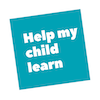Checking Your Child’s Reading Readiness Skills
If your child is having a really hard time learning to read, it’s very important to pull back and look at the reading readiness skills your child needs before reading becomes easier. If your child has immature pre-reading skills, you can spend hours of teaching time, only to have it dissolve.
CLICK HERE to learn more about how the brain matures, and why missing foundational skills can make learning difficult for your child.
Teachers are taught that there are six pre-reading skills. Our educational system assumes that children have these skills fully mastered before they start school at five. Unfortunately, our system isn’t set up to catch children who are bright, but can’t do these particular skills, and often, LD children also try hard to hide weaknesses. Since 1 in 5 children learns differently, it’s not uncommon to find a child in second grade with much lower abilities, starting from scratch. Let’s take another look at these pre-reading skills, to see how they might affect a child with LD.
The Pre-Reading Skills
Vocabulary—Most children enter school knowing between 3,000 and 5,000 words. This gives them context and a scaffold for learning. Classically, the best way to develop your child’s vocabulary is by reading books, naming objects in your child’s world, and explaining how you work in the house. Early television shows like Sesame Street can also help, but experts stress that children should only rely on a little bit of media at early ages.
Some children with learning differences have problems processing, or using information they receive through their ears. If your child seems bright but has real difficulties understanding directions or hearing what you say, consider taking them to an audiologist for auditory processing disorder testing.
If your child has problems speaking, this can also impact vocabulary. A speech language pathologist can evaluate and help your child.
Letter Knowledge—Children should be able to see how letters are different from one another, and should be able to recognize letters, and know their names and sounds.
If your child has problems sitting still and focusing, your child may have some sensory processing challenges. Sensory processing disorder is when a child’s perceptive senses develop at notably different speeds. If the proprioceptive sense is immature, for example, it can, affect a child’s ability to perceive shapes, and to perceive up from down and left from right (for example, b and d). See also missing foundational skills.
Try teaching your child to recognize letters by drawing the letters on your child’s back — and by letting your child feel and touch the letters. Letting your child learn letters with their whole body can help children with immature senses learn faster. Look for whole-body learning methods, such as Montessori.
If your child is dyslexic, then they might have problems differentiating phoneme sounds, or matching symbols. Here’s a list of weaknesses that stem from dyslexia. While most children simply learn their letters, it can take five or ten times as long for a dyslexic child to simply recognize, and learn to name and say the sound for a letter. The Orton-Gillingham method of teaching has been shown to work best for teaching dyslexic children, even at early levels.
Print motivation—Children reach a level where they’re interested by print. Children with learning differences, however, might not demonstrate this motivation, because they don’t see print in the same way, or it’s difficult for them to translate and use. Make sure that your child sees you reading books, and sees other people reading books. Have books around the house.
Comic books are a wonderful type of print, as are coloring books. Or you can help your children to make their own books. If there’s a circumstance where your child can teach another child (or a puppet!) how to use a book, it’s a great opportunity.
Print awareness—Knowing how to handle a book and how to follow words on a page. While every child learns how to handle a book, some children have problems with eye tracking, or eye fine motor skills.
Make sure that you read to your child every day. As you read, point to things on the page and encourage your child to find things on the page.
Narrative Skills—Ability to create stories and describe things. Ability to describe what happened outside, at the store, and so forth. If your child has problems with attention, or with some of the executive functions such as working memory or sequencing, this can make narrative skills very difficult.
The foundation of narrative skills is sequencing, and we need to perform sequencing every day in our lives. Have your child be an active part of everything you do. When you brush your teeth, what comes first? Taking the cover off of the toothpaste lid. And then what? And then what? Learning that things happen in sequence, for a reason, can be very good exercise.
Cooking is another excellent way to exercise basic sequencing skills. And it’s good to have your child tell one parent what they did with the other parent. A child should be able to recount personal stories, make up a story, explain a sequence, and make an argument.
If your child has serious problems doing that, then a speech-language pathologist can give them a narrative evaluation as the first step in helping them.
Phonological Awareness—Phonemes are the smaller sounds in words. Children should be able to tell you the first sound in a word. They should be able to play with sounds like “shhhhh” and “ow!” One way to exercise this ability is through singing nursery songs and saying nursery rhymes. It’s great to be able to learn to rhyme. Lack of phonological awareness or abilities is one of the foundational challenges in the 1 in 5 children with dyslexia. Dyslexia shows up far earlier than many people think, and children can be tested for it by 5 years of age, with the right evaluator. The Orton-Gillingham method of teaching has been shown to work best for teaching dyslexic children, even at early levels.
![]()
Reading readiness should come as you go through ordinary life with your child. The best ways to teach pre-reading skills are through talking, singing, reading, writing, and playing. It shouldn’t be excruciatingly difficult for your child to develop pre-reading skills. If it is, it’s a good idea to have your child evaluated. If your child learns in a different way than most, you can save time and a lot of misery by identifying and supporting their learning needs early.





